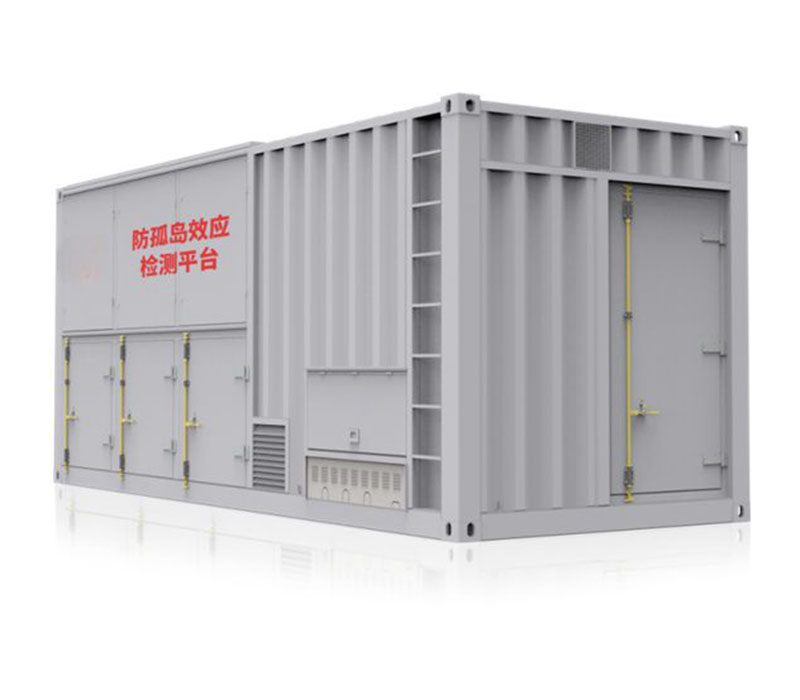Related content
- 2025-11-05Sunwin Rack-mounted Liquid-cooled Load BankRack-mounted Liquid-cooled Load Bank from Sunwin represents a leap forward in data center testing technology. Designed for the green, high-density data center of tomorrow, it tackles the core challenges of energy consumption and heat dissipation head-on. By adopting advanced liquid cooling to directly remove heat with remarkable efficiency, it fundamentally surpasses the limitations of traditional air-cooled load banks.
- 2025-10-02Sunwin Air-Cooled + Liquid-Cooled Hybrid Rack-Mounted Load Bank: An Efficient Solution for Data Center Testing
In data center testing scenarios, traditional load banks with a single heat dissipation method often face dilemmas such as "insufficient heat dissipation for high power" or "difficulty in adapting to small spaces". Sunwin, a leader in the power testing equipment field, has innovatively launched the air-cooled + liquid-cooled hybrid rack-mounted load bank. By integrating the advantages of two heat dissipation technologies, it provides professional support for data center equipment performance verification and system stability testing. - 2025-09-18Sunwin - EV AC Charging Pile Aging System: Double Guarantee of Quality and EfficiencyWith the rapid development of the new energy vehicle industry, the performance stability and factory quality of AC charging piles are of vital importance. The Sunwin - EV AC charging pile aging system is specially designed for the factory aging test of finished AC charging piles, making every effort to ensure the stable performance of finished charging piles and the qualified rate of outgoing products.
This system supports multiple standards and can meet the aging test requirements of national standard single - phase/three - phase, European standard single - phase/three - phase, and American standard charging pile products. - 2025-09-15Sunwin AC Single Phase / 3 Phase Non-linear Load BankIn scenarios such as data centers and network computer rooms that rely on UPS power supplies and inverter power supplies, traditional linear load banks are unable to simulate the real characteristics of non-linear loads like computers and network equipment, resulting in deviations in the actual performance testing of power supply equipment. Sunwin, deeply engaged in the power testing field, has launched the Sunwin RCD AC Single/Three-Phase Non-Linear Load Bank, which addresses this pain point with professional technology and builds a solid defense line for power supply safety.
How to perform load bank error analysis?
Load bank error analysis is an important task in electronic testing. It can help us understand the performance and accuracy of the load bank and find out the possible sources of errors so as to make corresponding calibration and corrections.
1. Introduction to load bank
The load bank is a device used to simulate loads. It can simulate different load resistance values and power values and provide stable power supply voltage and current. Load bankes are usually used to test the performance and parameters of electronic devices such as power supplies, amplifiers, and batteries.
2. Sources of load bank errors
The sources of errors in the load bank mainly include the following aspects:
Accuracy and stability of power supply voltage and current;
Accuracy and stability of load resistance value;
Influence of temperature;
Influence of cables and connectors;
Accuracy and stability of measuring instruments.
3.Methods for load bank error analysis
Accuracy and stability analysis of power supply voltage and current
By using instruments such as multimeters or oscilloscopes, measure the power supply voltage and current provided by the load bank, and compare the difference between the measured value and the set value to determine whether the accuracy and stability of the power supply voltage and current meet the requirements.
Analysis of the accuracy and stability of the load resistance value
By using instruments such as a multimeter or a bridge, measure the load resistance value provided by the load bank, and compare the difference between the measured value and the set value to determine whether the accuracy and stability of the load resistance value meet the requirements.
Analysis of the impact of temperature
By testing at different temperatures, compare the difference between the measured value and the set value to determine the degree of influence of temperature on the load bank.
Analysis of the impact of cables and connectors
By replacing different cables and connectors, compare the difference between the measured value and the set value to determine the degree of influence of the cables and connectors on the load bank.
Analysis of the accuracy and stability of measuring instruments
By using different measuring instruments for testing, compare the difference between the measured value and the set value to determine whether the accuracy and stability of the measuring instrument meet the requirements.
4. Load bank error calibration and correction
According to the results of the error analysis, the load bank can be calibrated and corrected to improve its accuracy and stability. The calibration and correction methods include:
Adjust the set values of power supply voltage and current to make them consistent with the measured values;
Replace the load resistor to make it more accurate and stable;
Control the influence of temperature by heating or cooling;
Replace cables and connectors and choose better quality products;
Regularly calibrate and maintain the measuring instruments to ensure their accuracy and stability.
In short, load bank error analysis is an important task in electronic testing. It can help us understand the performance and accuracy of the load bank and find out the possible sources of error so as to make corresponding calibration and corrections to improve the accuracy and reliability of the test.
Please give us a message


